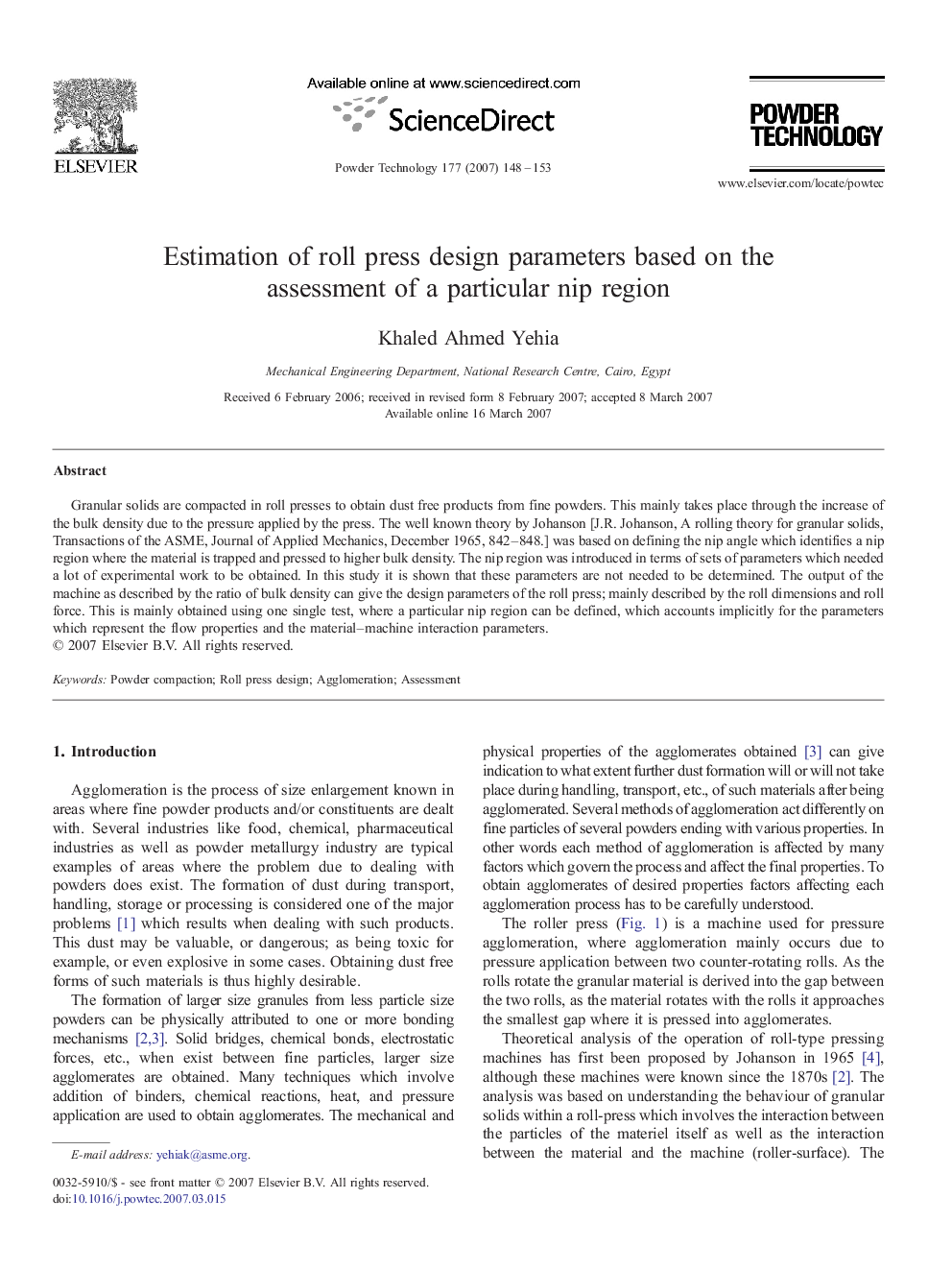| Article ID | Journal | Published Year | Pages | File Type |
|---|---|---|---|---|
| 238808 | Powder Technology | 2007 | 6 Pages |
Granular solids are compacted in roll presses to obtain dust free products from fine powders. This mainly takes place through the increase of the bulk density due to the pressure applied by the press. The well known theory by Johanson [J.R. Johanson, A rolling theory for granular solids, Transactions of the ASME, Journal of Applied Mechanics, December 1965, 842–848.] was based on defining the nip angle which identifies a nip region where the material is trapped and pressed to higher bulk density. The nip region was introduced in terms of sets of parameters which needed a lot of experimental work to be obtained. In this study it is shown that these parameters are not needed to be determined. The output of the machine as described by the ratio of bulk density can give the design parameters of the roll press; mainly described by the roll dimensions and roll force. This is mainly obtained using one single test, where a particular nip region can be defined, which accounts implicitly for the parameters which represent the flow properties and the material–machine interaction parameters.
Graphical abstractRoll presses used to obtain dust free granules from fine powders. The output of the press can give its design parameters; mainly described by the roll dimensions and roll force. This is obtained by defining a particular nip region, which accounts implicitly for the parameters which represent the flow properties and the material–machine interaction parameters.Figure optionsDownload full-size imageDownload as PowerPoint slide
